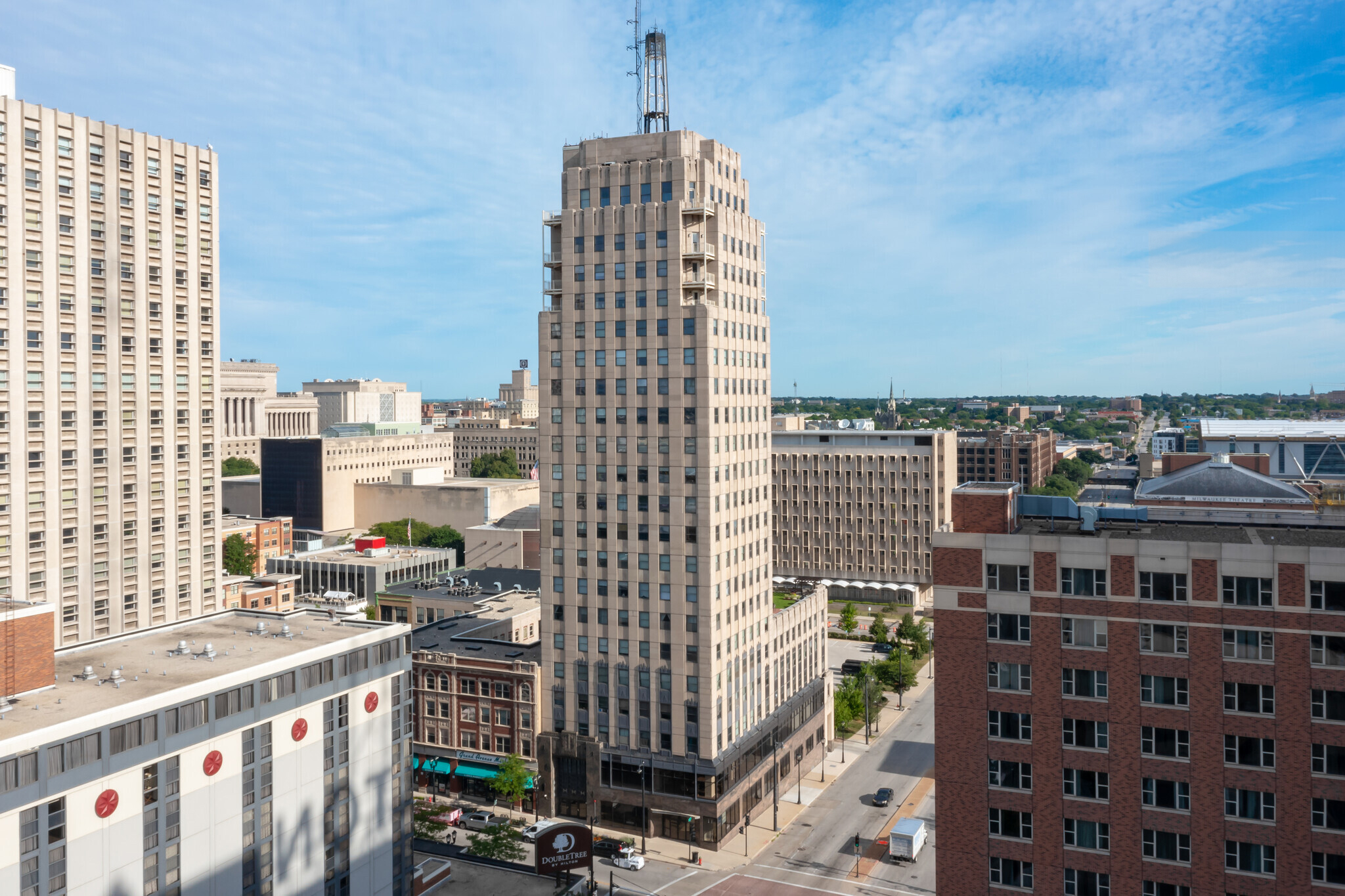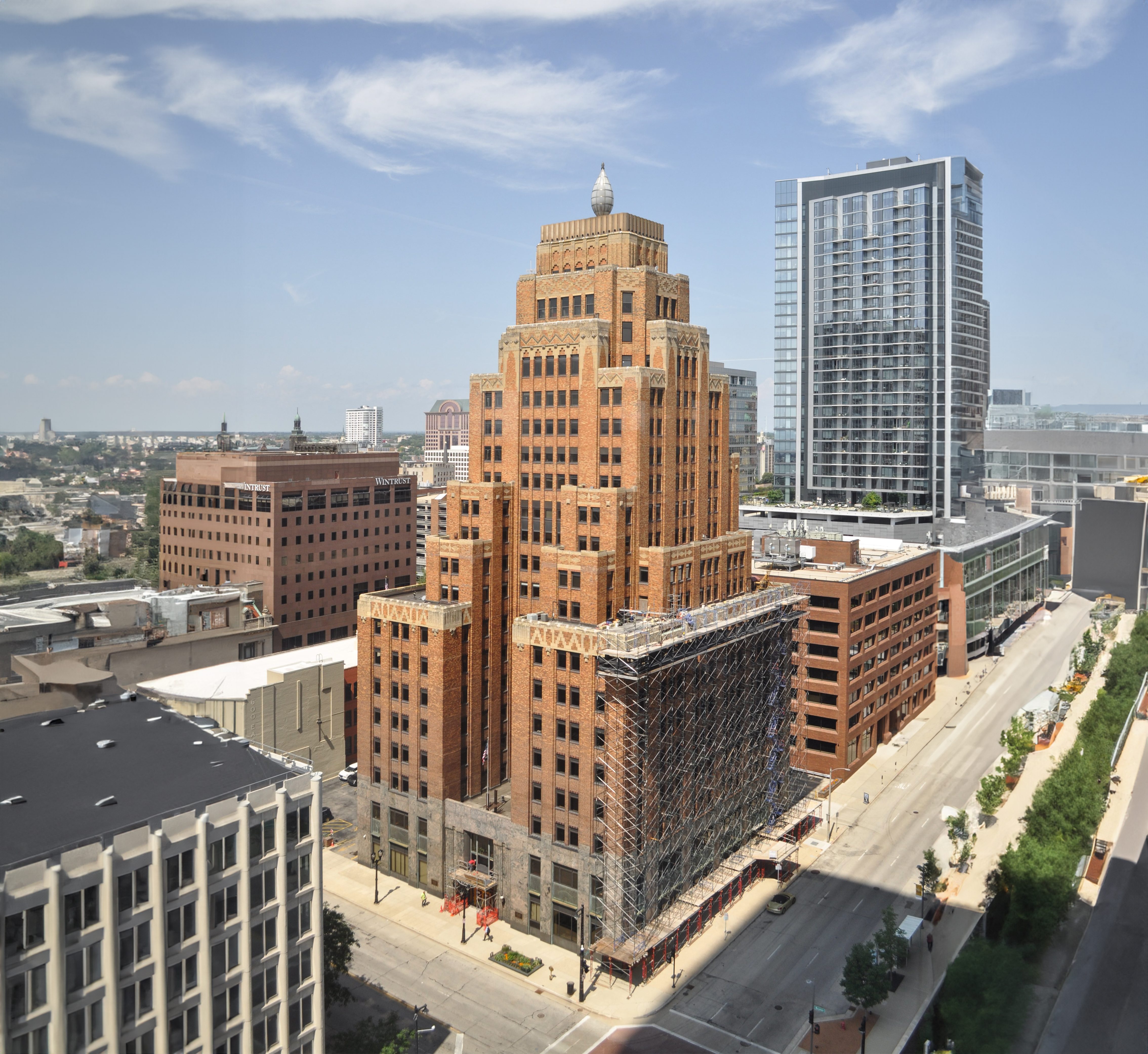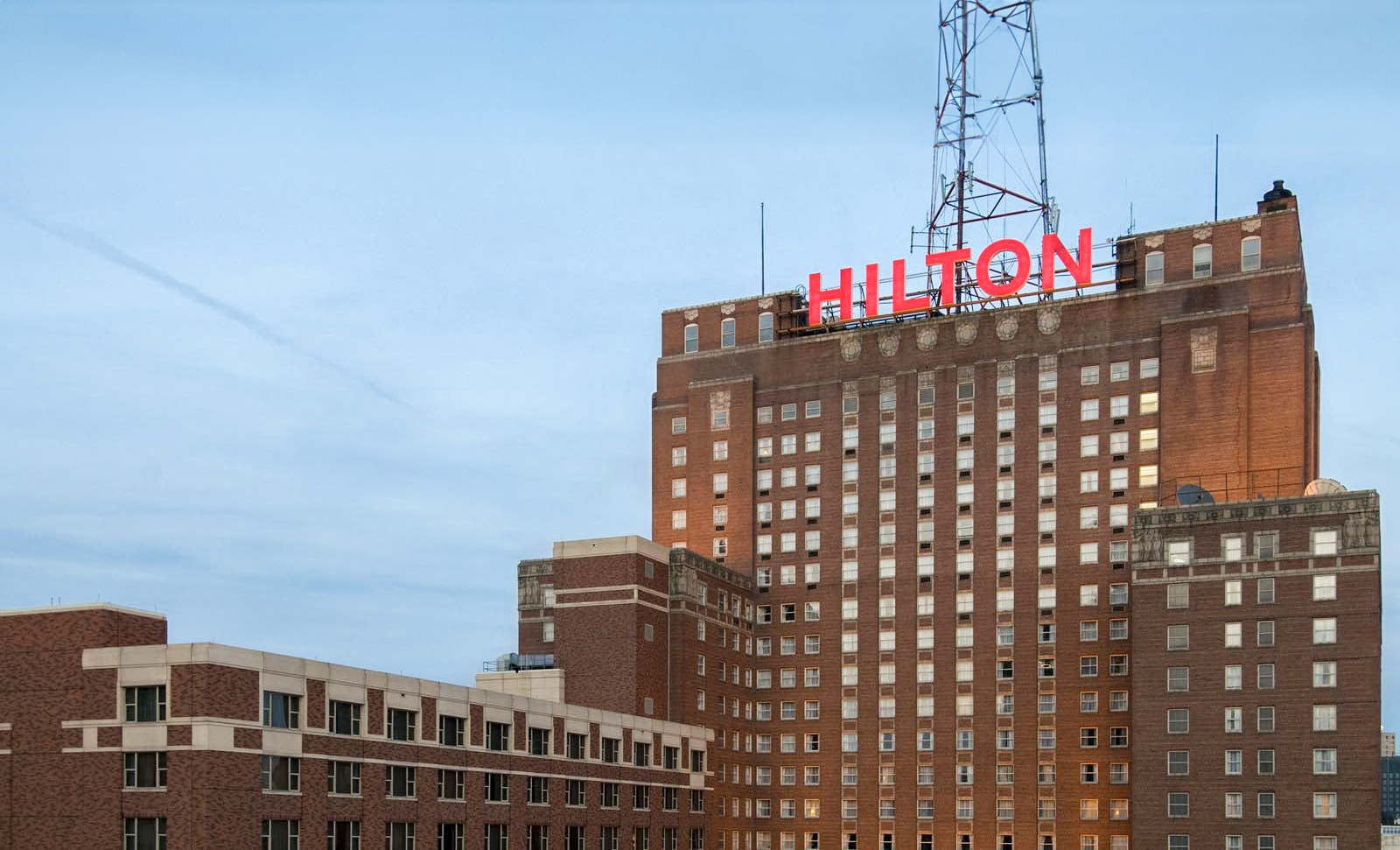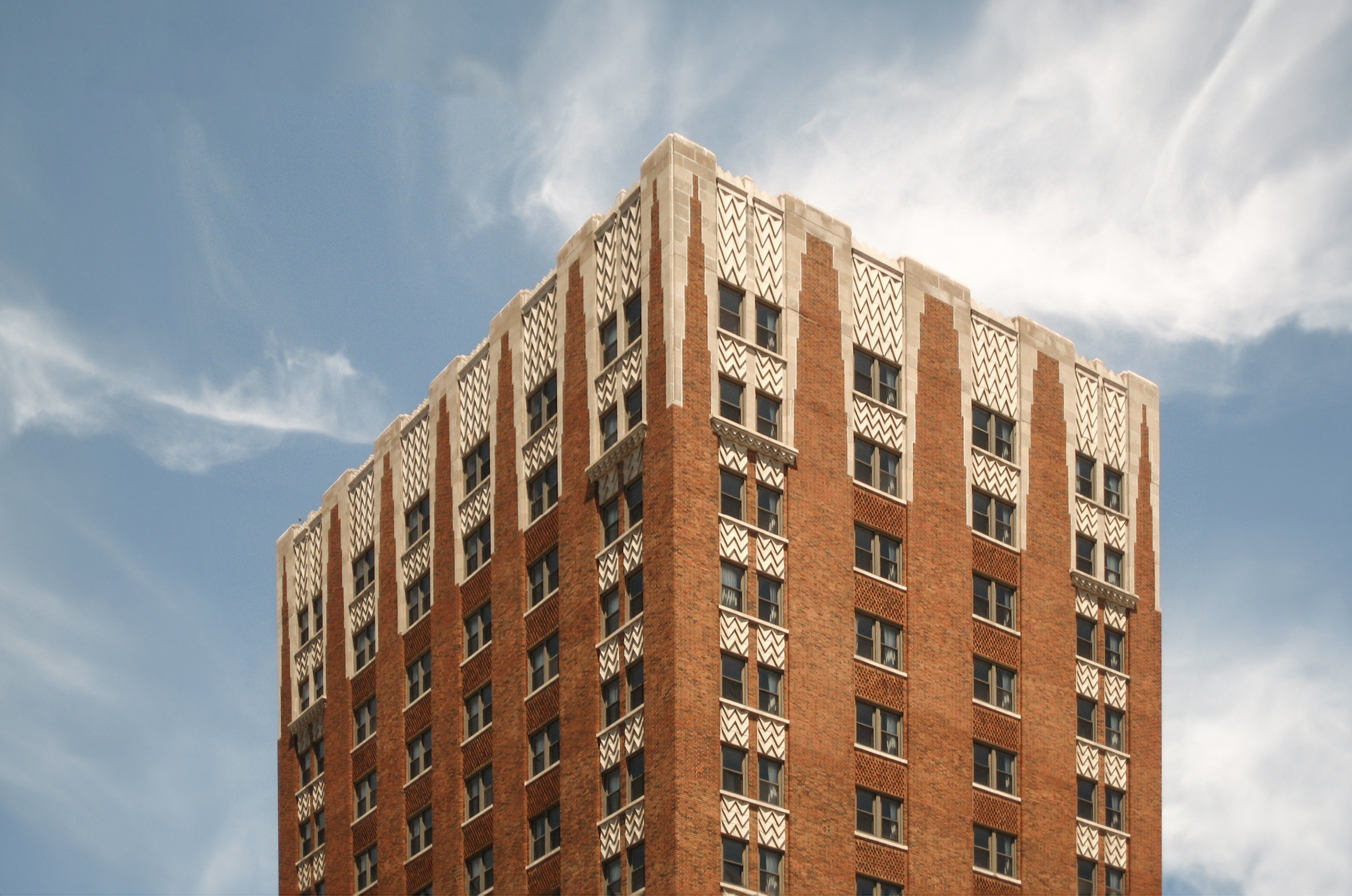The Wisconsin Tower is an Art-deco skyscraper designed by Weary & Alford Company, and built between 1929 and 1930 in Milwaukee, WI.
Wisconsin Tower is not the only name you might know this building by though. It is common for companies to want to attach their names to iconic buildings when they move in, or for the general public to come up with nicknames, and this one is no exception. The building has changed names several times over the years, and is also known as:
- Mariner Tower between 1930 and 1939.
- 606 Building.
Its precise street address is 606 West Wisconsin Ave, Milwaukee, WI. You can also find it on the map here.
At the time of its completion in 1930 the Wisconsin Tower incorporated solutions that were quite advanced at the time, these included electronically controlled elevators, which did not require an operator.
The building underwent a major restoration between 2005 and 2006.





